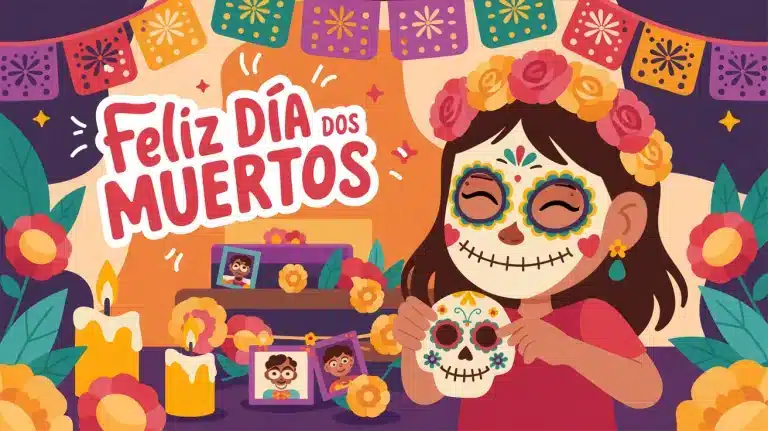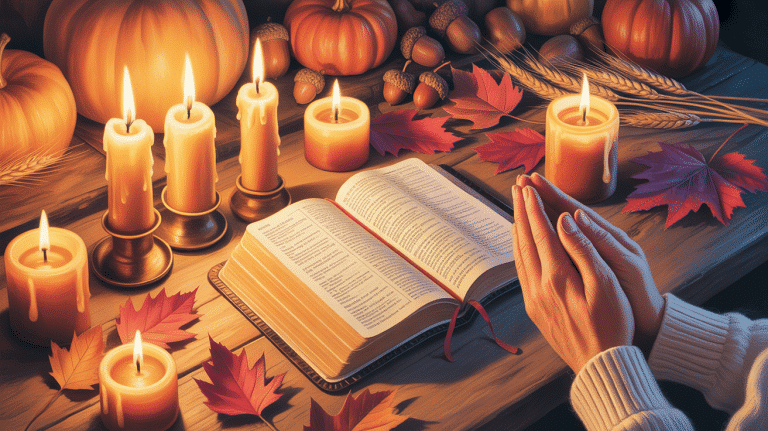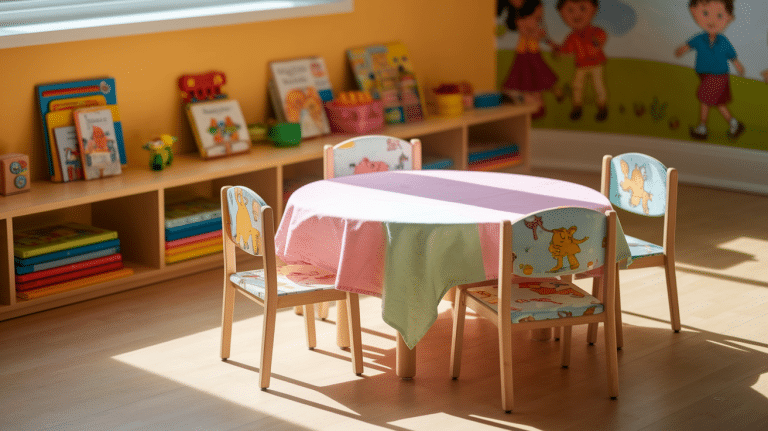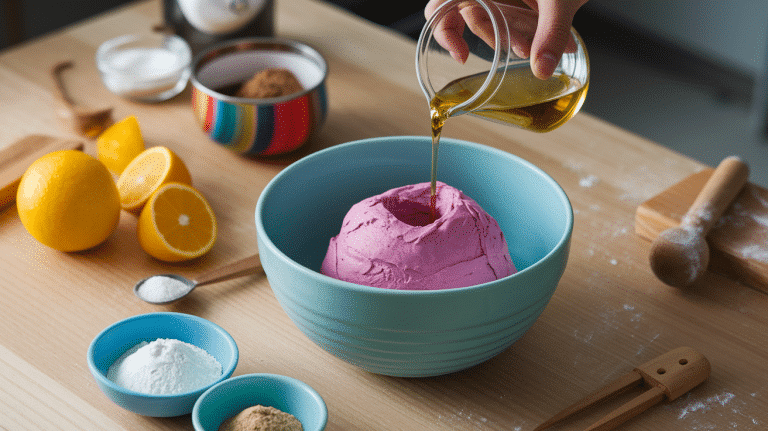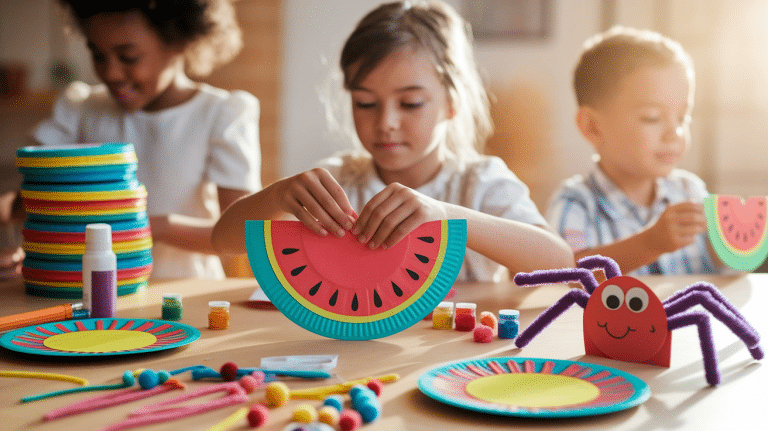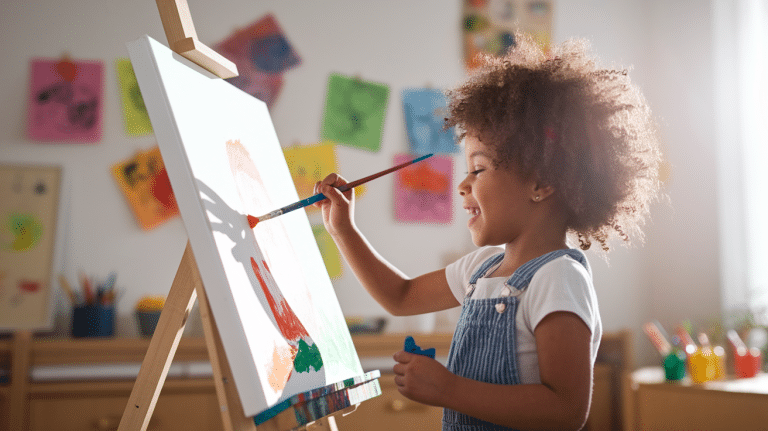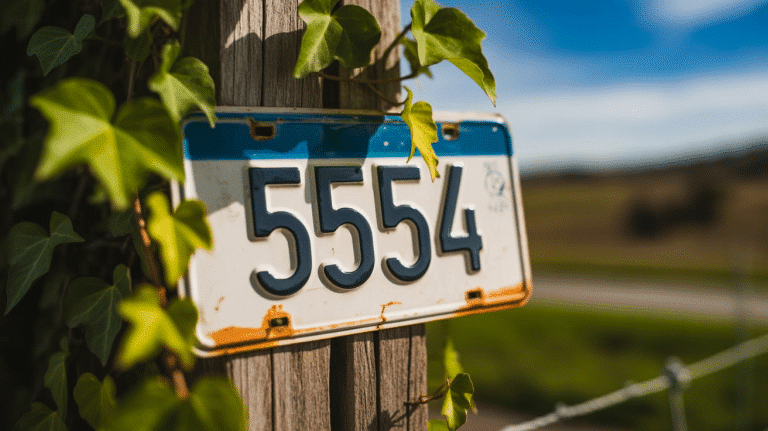Hello there, parents and teachers! Looking for ways to help children learn about and honor Día de los Muertos?
You’ve come to the right place. This colorful Mexican tradition offers a wonderful chance for kids to understand how different cultures remember loved ones who have passed away.
In this post, we’ll share simple and enjoyable activities that make this cultural celebration come alive for children of all ages. From making sugar skull masks to baking traditional bread, these hands-on projects help young ones connect with the true spirit of the occasion.
Get ready for crafts, games, treats, and learning moments that will make the Day of the Dead both fun and meaningful for the little ones in your life.
What Is the ‘Day of The Dead’?
Day of the Dead, or Día de los Muertos, is a Mexican tradition that honors friends and family members who have died. Unlike what some might think, it’s not scary or sad – it’s a time of joy and remembrance.
The celebration happens on November 1st and 2nd each year. The first day often focuses on remembering children who have passed away, while the second day honors adults.
When you see Day of the Dead items, you’ll notice bright colors and special symbols. Marigold flowers help guide spirits with their strong smell and bright orange color.
Sugar skulls represent the deceased in a cheerful way. Families build ofrendas (altars) with photos, candles, and the favorite foods of those who have died. These items aren’t meant to be scary but rather show love and respect.
Why Is It Important?
Learning about Day of the Dead helps children:
- Understand that remembering loved ones can be a happy experience
- Learn how different cultures view life and death
- Process feelings about loss in a healthy, positive way
- Connect with family history and stories
When children participate in Day of the Dead activities, they learn that honoring memories is essential. This celebration teaches kids that discussing the deceased can offer comfort, not sadness.
The vibrant colors, sweets, and crafts make these important lessons more accessible for young minds. Celebrating past lives helps children understand life’s cycle and express their feelings about loss, building emotional strength for the future.
40 Fun Day of the Dead Activities for Kids
Hands-on projects that bring Mexican tradition to life while teaching children about remembrance and cultural appreciation.
Creative Crafts – Craft Your Way Through Día
These craft activities let children express their artistic side while learning about Day of the Dead symbols and traditions. The colorful, hands-on projects are perfect for home or classroom settings.
1. Make Sugar Skull Masks: Use paper plates, markers, and glitter to decorate.
Cut eye holes in paper plates and have children paint them white. Add colorful designs with markers and glitter. These masks teach about sugar skull symbolism while kids create wearable art with flowers, swirls, and dots.
2. Craft papel picado banners: Cut colorful tissue paper into traditional patterns.
Fold bright tissue paper and cut small designs along the edges. When unfolded, the paper reveals lace-like patterns. String several together to make festive banners like those seen in Mexican celebrations.
3. Paint sugar skull rocks: Use white paint as the base, then add bright designs.
Paint smooth rocks white, then add colorful designs with small brushes or cotton swabs. These keepsakes can be displayed year-round as reminders of the celebration and its meaning.
4. Create tissue paper marigolds: Easy folding and fluffing makes bright blooms.
Stack 6-8 sheets of orange and yellow tissue paper. Fold accordion-style, secure in the middle, and fluff each layer. The paper flowers represent the real marigolds that guide spirits with their bright color and scent.
5. Make skeleton puppets:Use popsicle sticks and paper cutouts.
Cut out paper bones and connect them with brads to create movable joints. Attach to a popsicle stick and watch your skeleton dance! This craft shows the joyful way that Day of the Dead portrays the departed.
6. Design skull bead bracelets: Use colorful beads and skull charms.
String bright beads and small skull shapes onto elastic cord. This simple jewelry project works well for younger children while teaching them about the skull motif in Day of the Dead art.
7. Build a mini ofrenda (altar): Add photos, candles (battery-powered), and keepsakes.
Use a small box as the base for a personal memorial. Add tiny photo frames, LED candles, and objects that remind children of loved ones. This project teaches the heart of the tradition – honoring memories.
8. Decorate paper coffins: Craft tiny cardboard coffins and personalize them.
Cut coffin shapes from cardboard and cover with colorful paper. These mini coffins can hold written memories or small treats, showing how the tradition views death as part of life’s cycle.
9. Make skeletons from Q-tips: Arrange Q-tips on black paper in a skeleton shape.
Glue cotton swabs onto black paper to form a human skeleton. Children learn basic anatomy while creating art that connects to the playful skeleton figures common in the celebration.
10. DIY sugar skull bookmarks: Fun to color and useful for reading time!
Cut skull shapes from white cardstock, add a hole and tassel, then decorate with markers. These useful crafts keep the learning going every time a child opens a book.
Memory Makers: Learning with Heart and Hands
These educational activities help children understand the deeper meaning behind Day of the Dead while building knowledge and skills.
11. Create a family tree – Add pictures and names of family members.
Help children draw a tree with branches for each family member. Include photos or drawings of living relatives and those who have passed away.
This visual representation shows how we remain connected to our ancestors and helps children see their place in the family story.
12. Write memory cards for loved ones – Share special stories or facts about family members.
Provide children with cards to write memories or draw pictures of special moments with deceased grandparents or family members. Place these cards on a home altar or share them during family gatherings, fostering meaningful conversations about our ancestors.
13. Compare Halloween vs. Day of the Dead – Use a Venn diagram or poster to show differences and similarities.
Create a chart showing how these two autumn celebrations differ and what they share.
Halloween focuses on spooky fun, while Day of the Dead centers on remembrance, but both involve special foods and decorations. This comparison helps children understand cultural differences and reduce misconceptions.
14. Label a Day of the Dead symbols chart – Teach meaning behind marigolds, candles, skulls, and other items.
Create a poster of traditional symbols. Have children label each and write its meaning. This activity reinforces vocabulary and helps them understand each element’s significance in the celebration.
15. Color a Day of the Dead map of Mexico – Identify where the celebration is most common.
Print a map of Mexico highlighting Day of the Dead regions. Children can color it and add small celebration drawings. This lesson shows how customs vary within one country.
16. Learn basic Spanish words – Teach words like calavera, flor, familia, amor.
Create flashcards with Spanish terms related to the celebration. Practice pronunciation and use the words when doing other activities. This mini language lesson connects children to the cultural roots of the tradition.
17. Interview grandparents or parents – Ask about stories of older relatives.
Help children prepare questions for family members about relatives they never met. Record these stories in a notebook or audio. This project preserves family memories and strengthens bonds across generations.
18. Write a remembrance poem – Focus on love, memories, and gratitude.
Encourage children to write poems about a special person who has died, focusing on happy memories, lessons learned, or gratitude for their presence. This exercise promotes healthy expression of feelings.
19. Draw your own calavera character – Give it a name and story.
Encourage children to create a skeleton character doing something they enjoy.
Maybe it’s playing soccer, baking cookies, or reading books. Add a story about who this character was in life. This creative writing and art project shows how Day of the Dead keeps the personality of the deceased alive.
20. Make a “life celebration” collage – Using magazine clippings or drawings.
Gather old magazines, scissors, and glue. Have children cut out images that represent joy, celebration, and life.
Arrange these on paper to show the festive spirit of Day of the Dead. This visual art project helps shift focus from sadness to celebration when thinking about death.
Playful Spirits: Games that Celebrate Life
These fun activities bring laughter and play to Day of the Dead learning, making the cultural concepts more accessible for children of all ages.
21. Play Day of the Dead bingo – Use pictures of candles, flowers, skulls, etc.
Create bingo cards with images of traditional Day of the Dead symbols instead of numbers. Call out the items and their meanings as children mark their cards. This game reinforces vocabulary while keeping children engaged and having fun.
22. Matching memory card game – With traditional icons and symbols.
Create pairs of cards showing Day of the Dead items. Place them face down and take turns flipping two at a time to find matches. This classic memory game builds recall skills while familiarizing children with the visual elements of the celebration.
23. Skeleton dance freeze game – Play music, kids freeze when it stops.
Put on lively Mexican music and have children dance like happy skeletons. When the music stops, everyone freezes in place. This movement activity burns energy while connecting to the joyful spirit of the celebration.
24. Make and solve Day of the Dead puzzles – Turn art or coloring pages into puzzles.
Have children color Day of the Dead scenes, then cut them into puzzle pieces. Exchange puzzles with friends to solve. This dual-purpose activity creates both an art project and a game that can be enjoyed multiple times.
25. Scavenger hunt for symbols – Place mini marigolds, candles, or skulls around the house or classroom.
Hide small objects related to Day of the Dead around your space. Give children a checklist of items to find and explain each one’s significance when found. This active hunt gets kids moving while learning about important symbols.
26. Roll-a-skull dice drawing game – Each number adds a new skull feature.
Create a chart where each number 1-6 corresponds to a different skull feature (eyes, nose, teeth, etc.). Children roll a die and add the corresponding feature to their drawing. This game of chance creates unique skull art every time.
27. Skeleton ring toss game – Toss rings onto plastic bones or bottles.
Set up bone-shaped targets or bottles decorated as skeletons. Children toss rings to score points. This carnival-style game builds hand-eye coordination while incorporating Day of the Dead imagery.
28. Pin the flower on the ofrenda – A festive twist on a party classic.
Create a large poster of an altar (ofrenda) and cut out paper marigolds with tape on the back. Blindfolded children try to place their flower in the correct spot. This variation of a classic party game teaches about altar decoration.
29. Lotería (Mexican bingo) – Use kid-friendly Day of the Dead cards.
Play this traditional Mexican game similar to bingo but with pictures instead of numbers. Create special cards featuring Day of the Dead items for a culturally connected gaming experience.
30. Calavera bean bag toss – Throw bags through a cut-out skull target.
Cut large skull shapes from cardboard boxes with the mouth as a hole. Children toss bean bags through the opening to score points. This active game builds motor skills while using Day of the Dead imagery.
Sweet Memories: Flavors of Remembrance
These food activities bring Day of the Dead flavors to life and create delicious ways to learn about the tradition’s culinary aspects.
31. Bake pan de muerto – A traditional bread with bone-shaped topping.
Make this sweet bread together, showing children how to form the bone shapes that decorate the top. The round loaf represents the circle of life, while the “bones” honor those who have passed.
This baking project introduces children to a key food from the celebration.
32. Decorate sugar skull cookies – Use icing, sprinkles, and food-safe markers.
Bake simple round cookies, then decorate them with white icing and colorful details to resemble sugar skulls. Children can add dots, swirls, and flowers with colored icing or edible markers. This edible art project connects to the sugar skull tradition in a tasty way.
33. Make fruit kabobs in bright colors – Use oranges, berries, pineapple.
Thread chunks of bright fruit onto skewers to create colorful treats. The vibrant colors mirror the visual richness of Day of the Dead celebrations. This healthy snack option teaches children about the importance of color in the tradition.
34. Create candy skull cupcakes – Top cupcakes with sugar skull candy.
Bake cupcakes and frost them in bright colors. Add small sugar skull candies as toppers. This sweet treat makes a perfect party food for classroom celebrations or family gatherings focused on the tradition.
35. Mix a kid-safe version of hot chocolate or atole – Warm and comforting.
Prepare Mexican hot chocolate (without spice for sensitive palates) or atole, a warm corn-based drink. Explain how families often place these drinks on altars for returning spirits. This warming activity connects children to the comfort foods of the celebration.
36. Build a dessert ofrenda tray – Include treats that represent family favorites.
Create a tray of desserts loved by family members, both living and deceased. As children arrange the treats, discuss the tradition of placing favorite foods on altars, merging storytelling with cooking.
37. Make skeleton snacks – Arrange veggies into a skeleton shape.
Use cucumber slices, carrot sticks, bell pepper pieces, and other vegetables to create a skeleton shape on a large tray. This healthy option teaches anatomy while making nutrition fun during the celebration.
38. Create marigold punch – Bright citrus punch with orange slices and edible flowers.
Combine orange and pineapple juices, adding orange slices for a marigold-like color. Use edible flowers as a garnish. This refreshing drink links marigolds to flavor.
39. Color your own edible skulls – Use skull-shaped marshmallows and edible markers.
Purchase large marshmallows or skull-shaped ones. Use food-safe markers for colorful designs. This no-bake edible craft creates a themed treat.
40. Decorate mini cakes with traditional symbols – Add marigold and skull frosting.
Bake small cupcakes or buy plain ones to decorate with Day of the Dead symbols. Teach children to pipe marigold shapes and skull outlines using colored frosting. This activity adds artistry to a sweet treat.
Why Teach Kids About the Day of the Dead?
Introducing children to Día de los Muertos opens a window into a rich cultural tradition that views death not as something to fear, but as a natural part of life’s cycle.
This Mexican celebration offers many valuable lessons for young minds beyond just learning about another culture’s customs.
- Cultural Respect: Children learn to value different traditions and understand how various communities honor their past.
- Healthy Grief Processing: Kids develop tools to talk about loss in an open, positive way that celebrates life.
- Family Connections: The tradition helps strengthen bonds as families share stories about relatives from past generations.
- Artistic Expression: Bright colors, unique symbols, and creative projects make learning fun while building artistic skills.
- History Appreciation: Children connect with the past and learn how traditions blend old customs with new meanings.
When you share Day of the Dead with children, you’re giving them more than just a fun activity—you’re helping them build emotional tools, cultural knowledge, and family bonds that will last a lifetime.
The joyful spirit of remembrance at the heart of this tradition teaches kids that keeping memories alive is a gift we can all share.
Bringing Día de los Muertos Into Your Home!
When you share Day of the Dead with children, you’re giving them more than just a fun activity—you’re helping them build emotional tools, cultural knowledge, and family bonds that will last a lifetime.
The joyful spirit of remembrance at the heart of this tradition teaches kids that keeping memories alive is a gift we can all share.
Through crafts, games, foods, and stories, children learn that talking about those who came before us brings comfort and connection.
As they create sugar skulls or paper flowers, they’re also creating a healthy way to understand life’s full circle.
So gather your little ones, pull out the bright colors, and start making memories while honoring memories. The lessons they learn will bloom far beyond the celebration itself.

